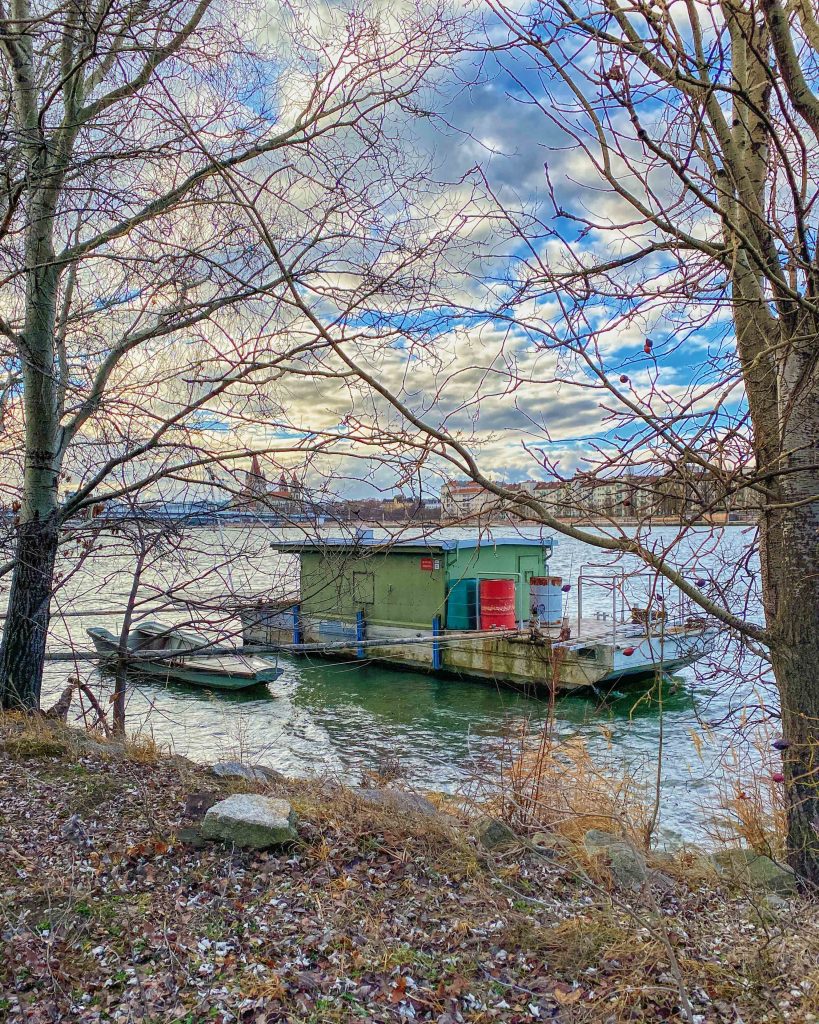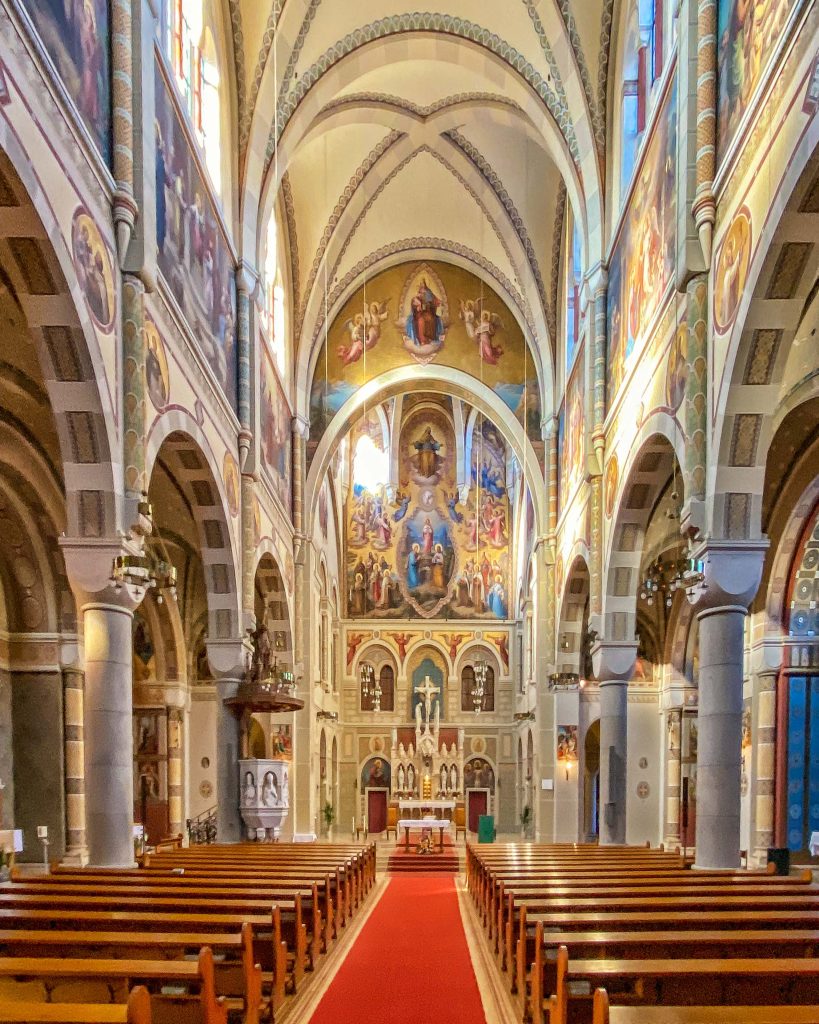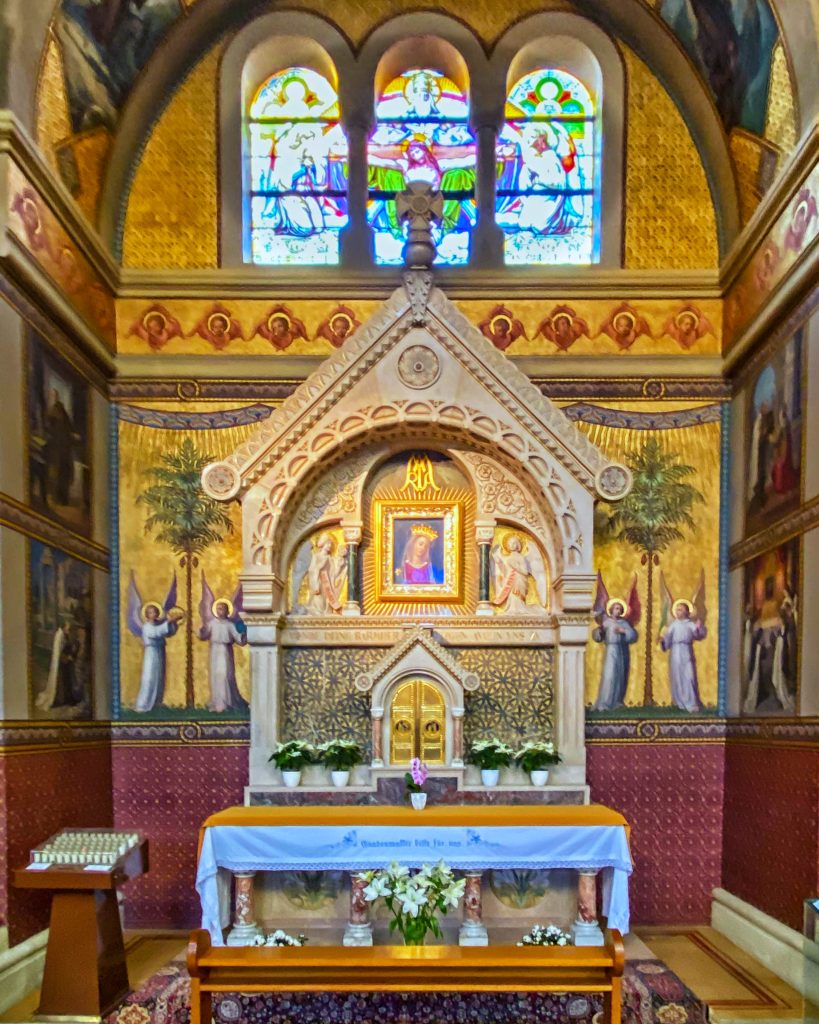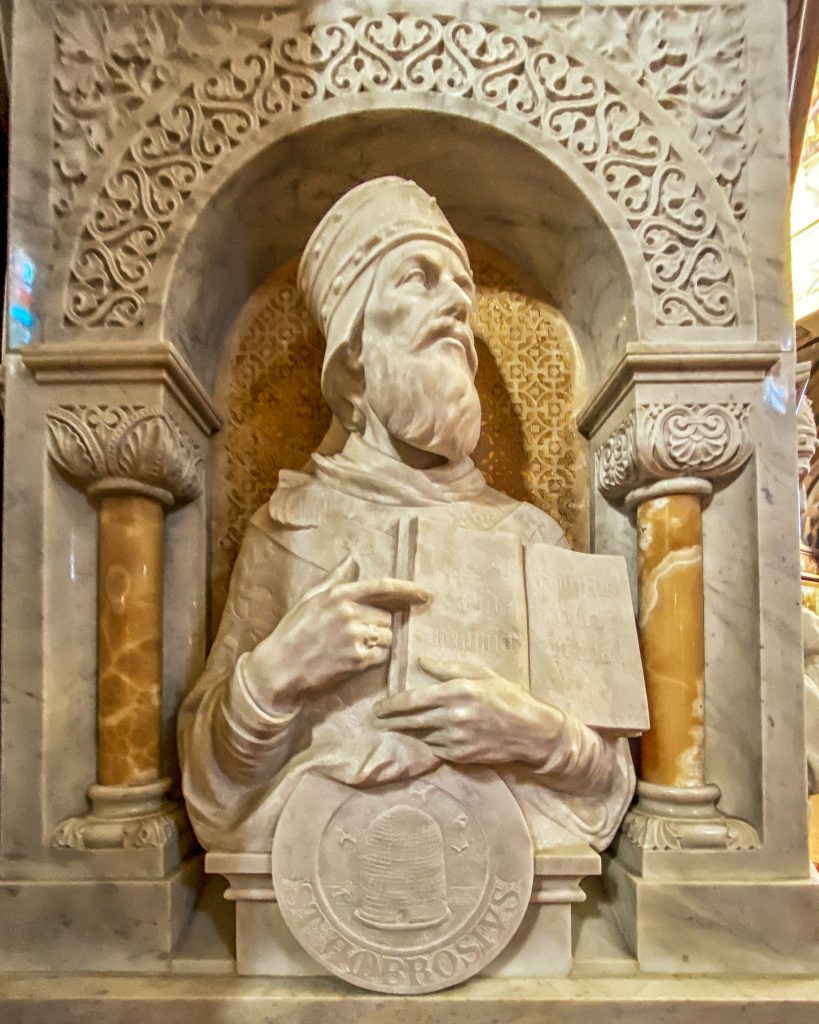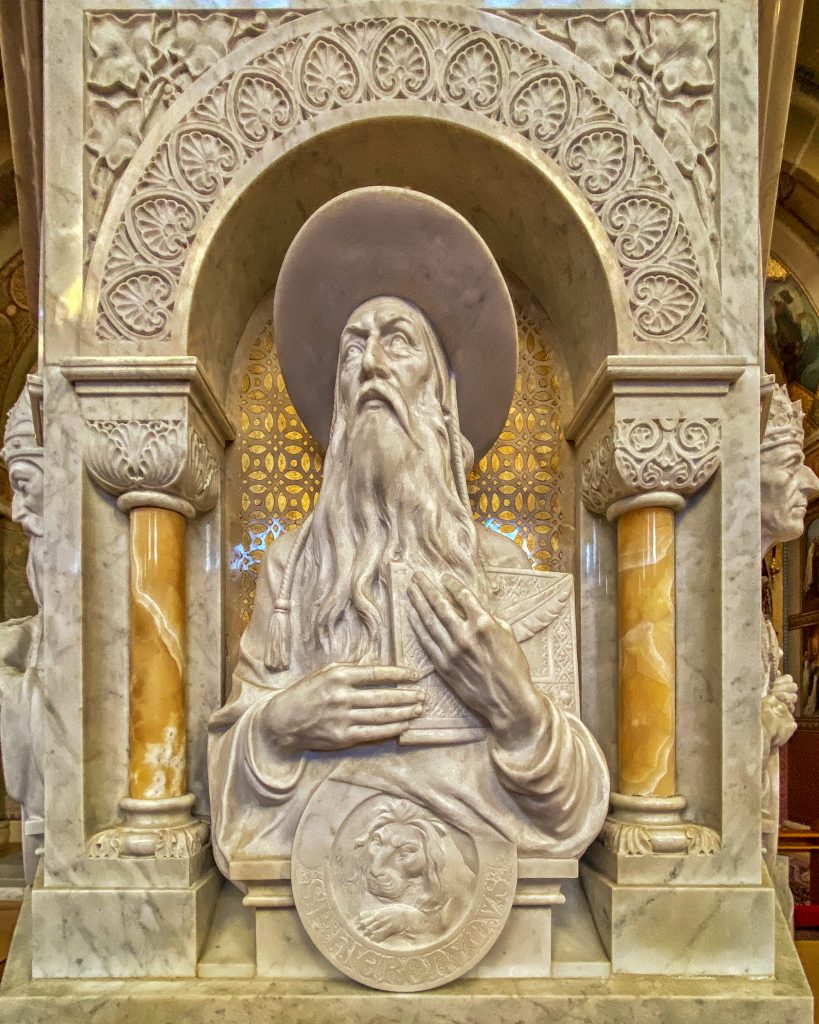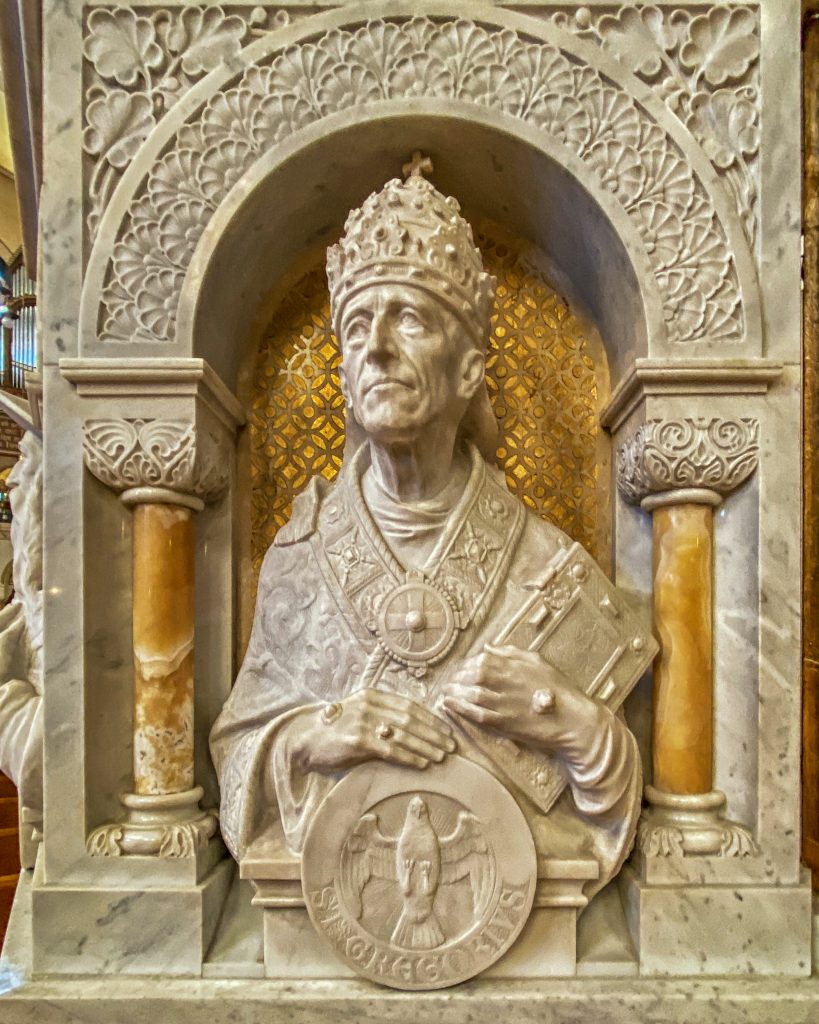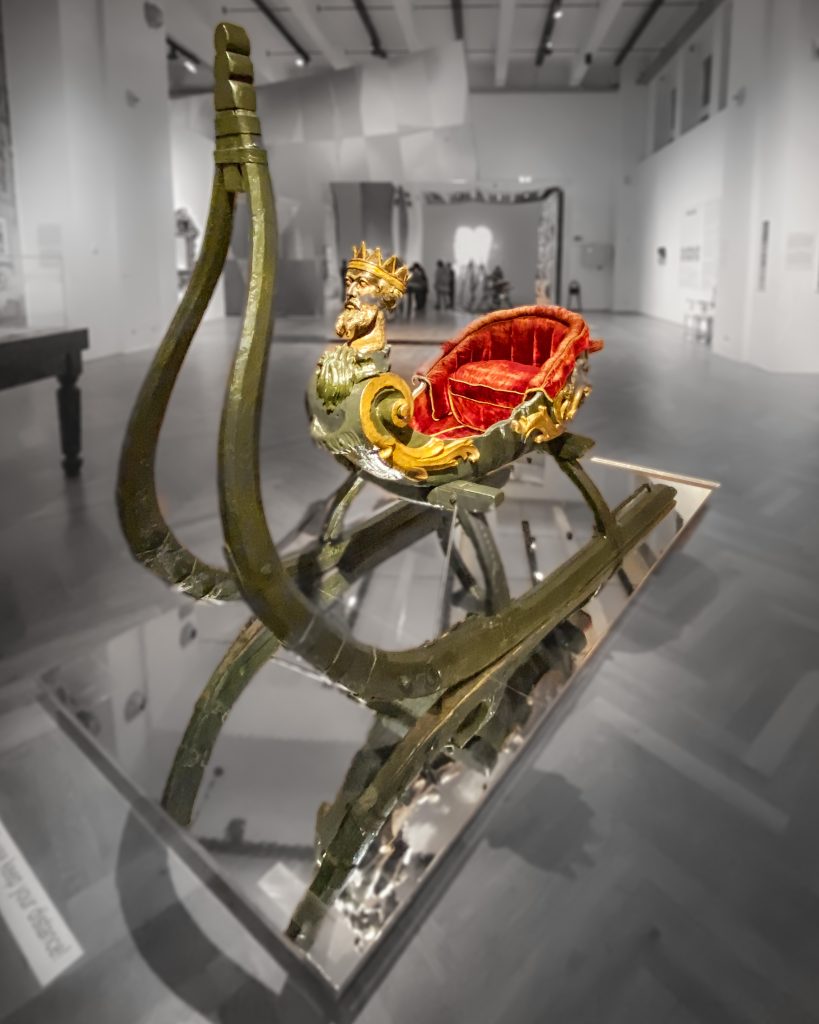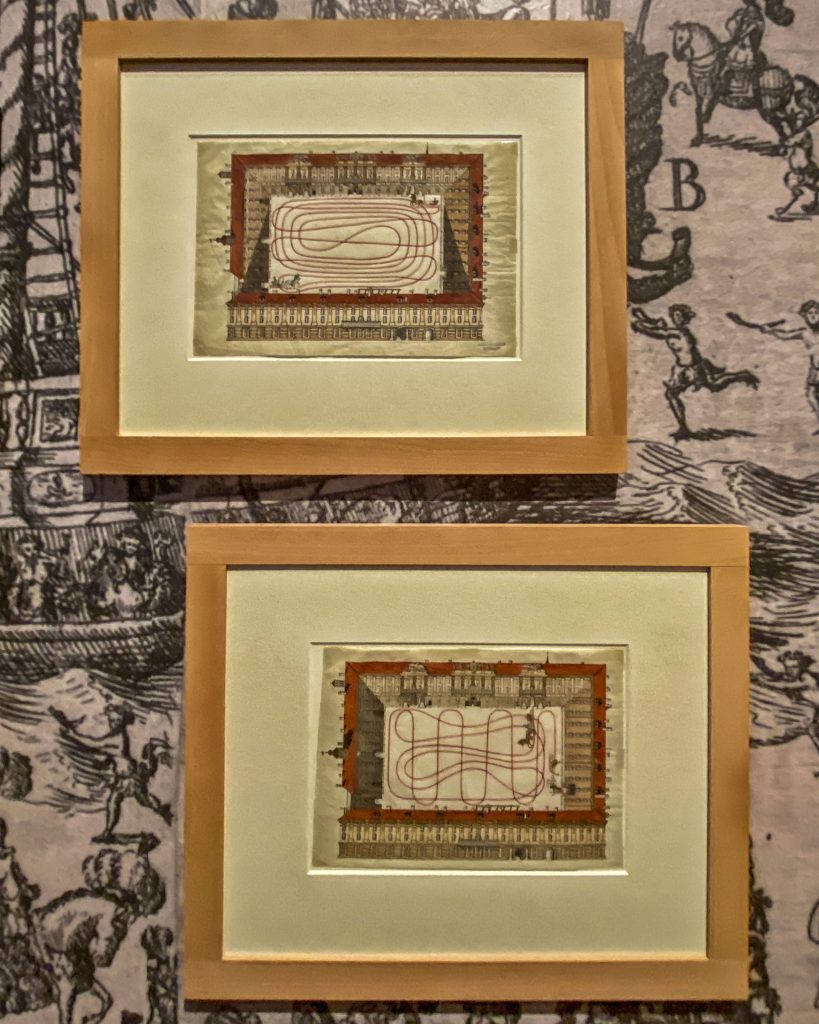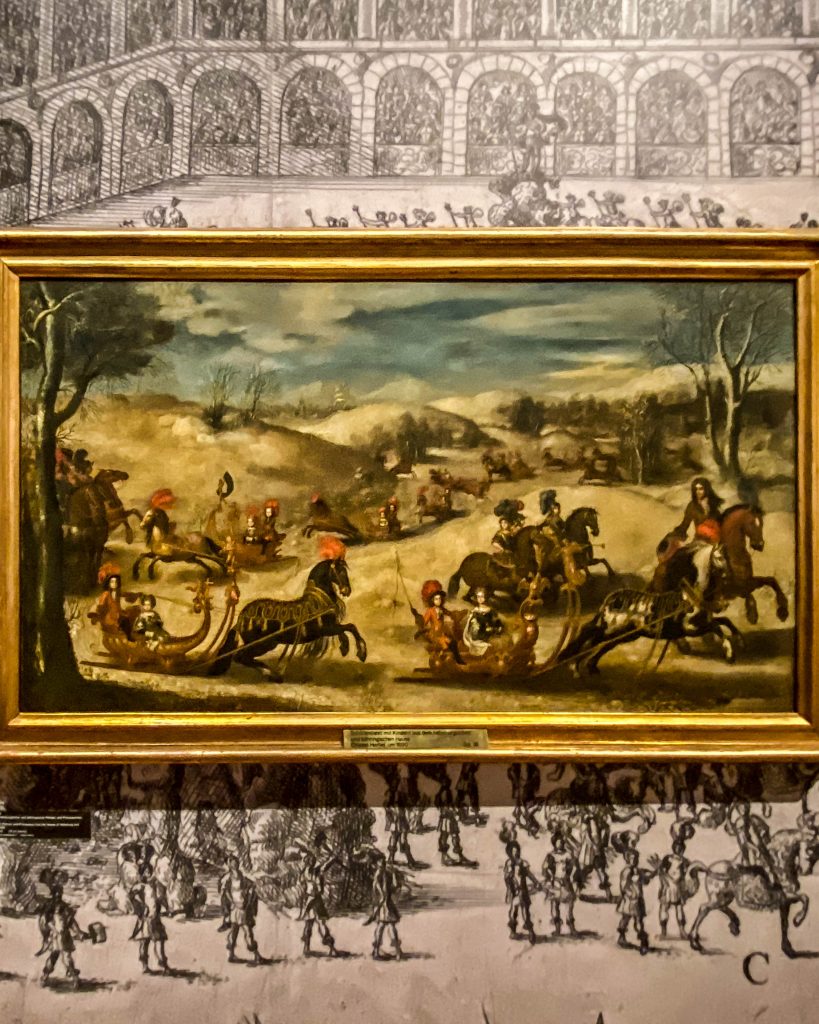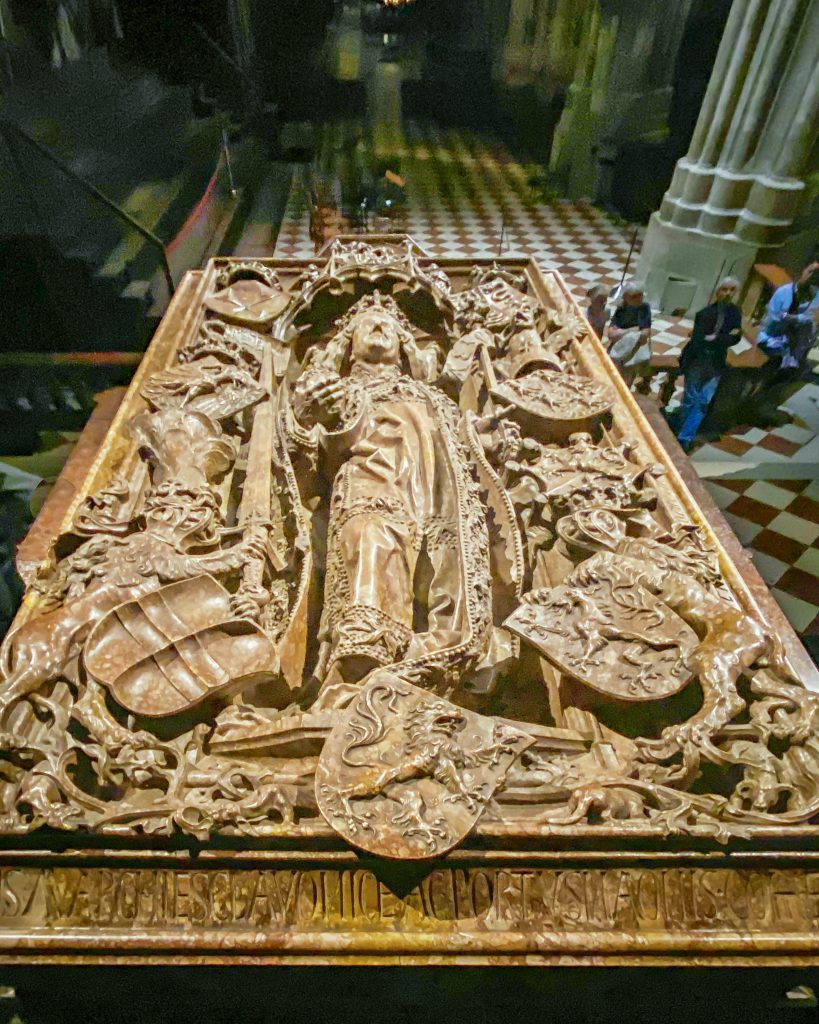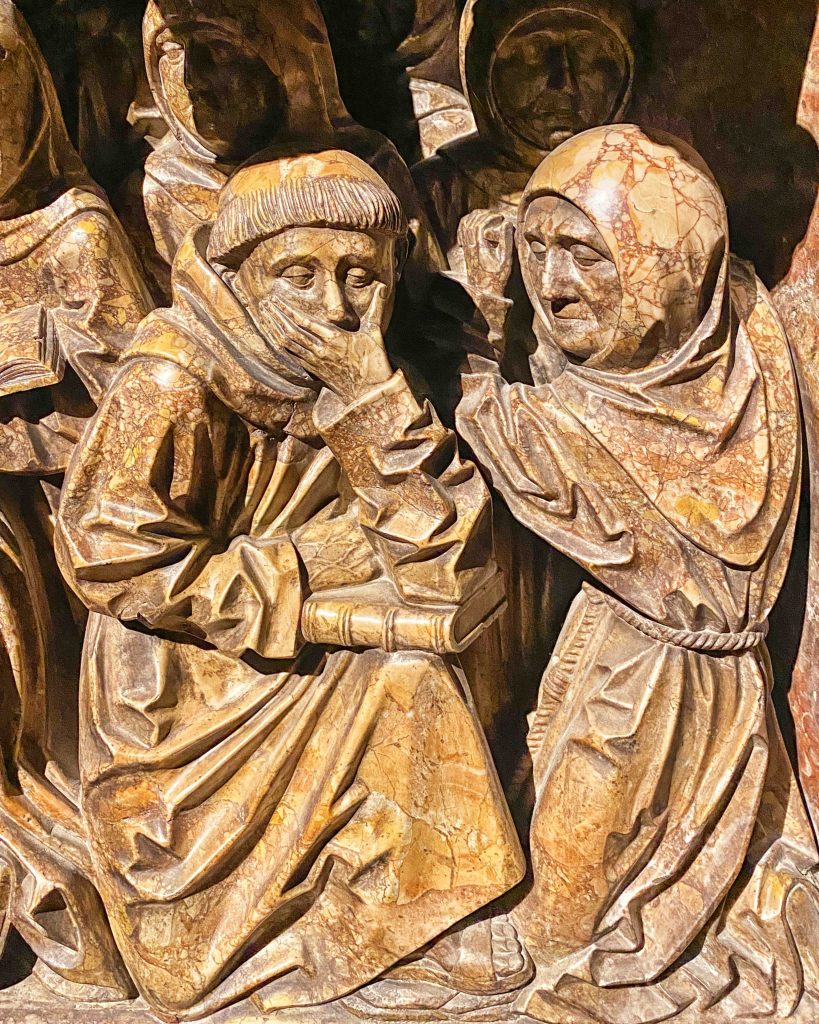Columned hall in Austrian parliament
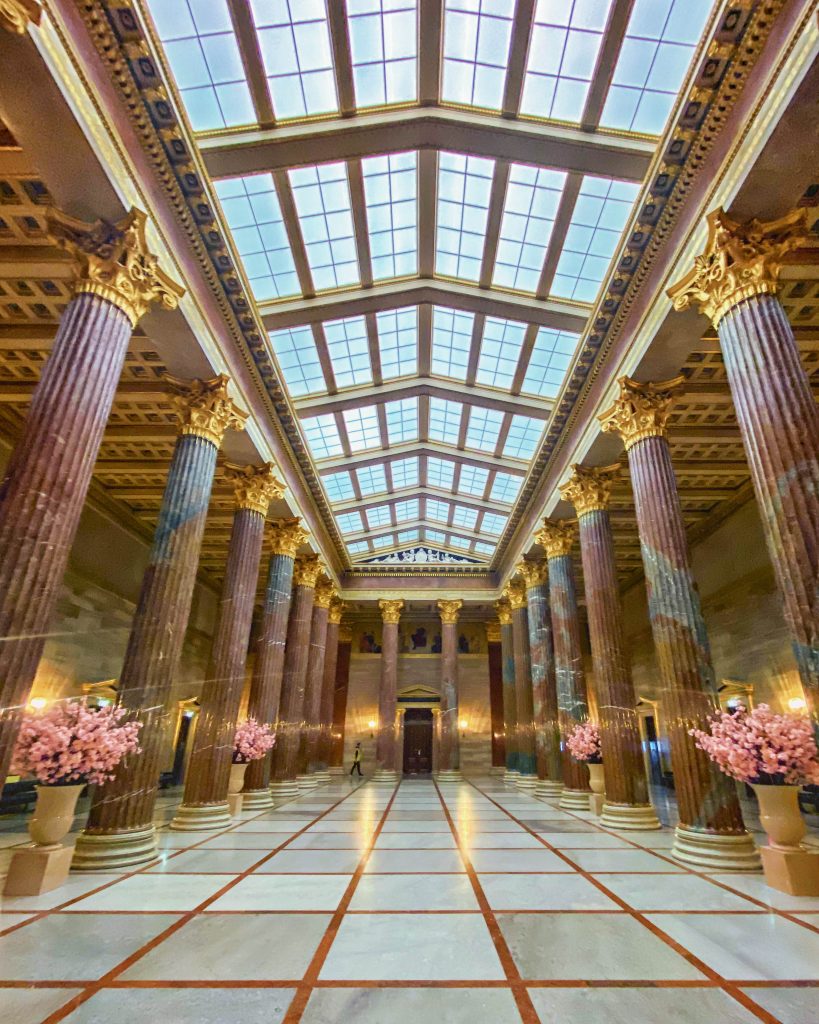
The centerpiece of the Parliament, which was completed in 1871 (and has now been completely renovated) is the main work of the outstanding architect Theophil Hansen, is the monumental portico. In the style of an ancient peristyle with a glass gabled roof, supported by 24 monolithic columns of Salzburg marble, this space was also intended to function as the social center of the building. A meeting place for exchanges between the different chambers of the Imperial Council of the time.
The renovated floor of Karst marble slabs covers 40×23 meters. In the course of WWII there was severe damages after which 2 columns were replaced. The frescoes, which were painted by the Austrian painter Eduard Lebiedzki in a historicist style, are only preserved in fragments.
You can also see the pediment groups „Vaterlandsliebe“ (Patriotism) by Hugo Haerdtl and „Einigkeit“ (Unity) by Karl Sterre and between the columns there are figures of Roman statesmen.
